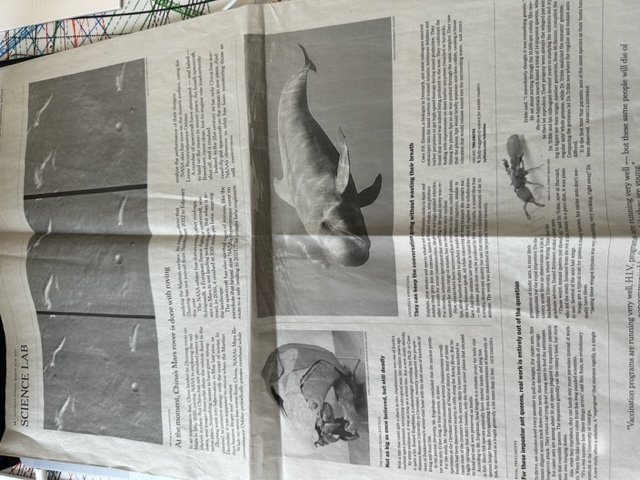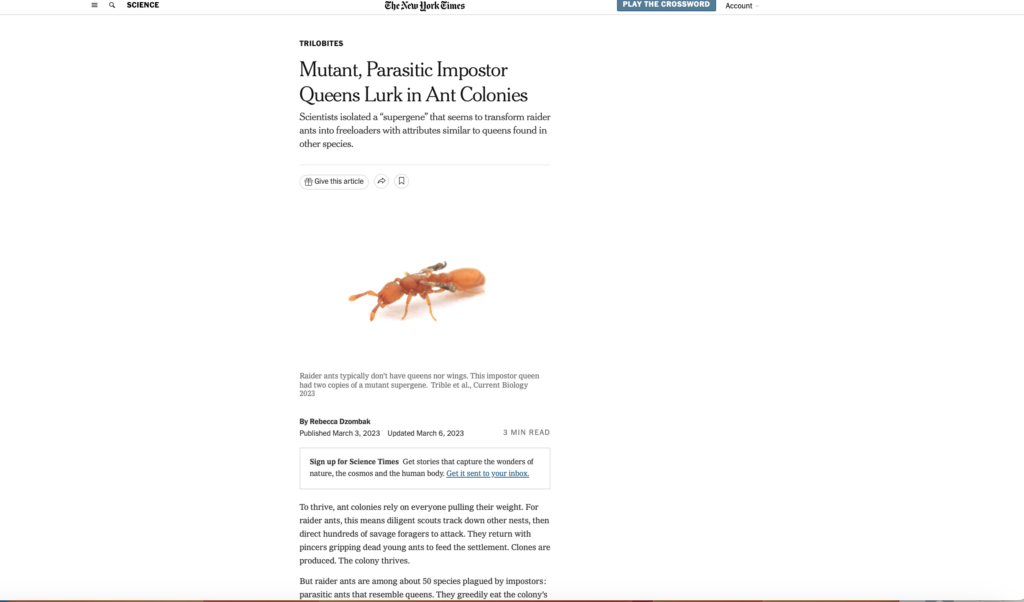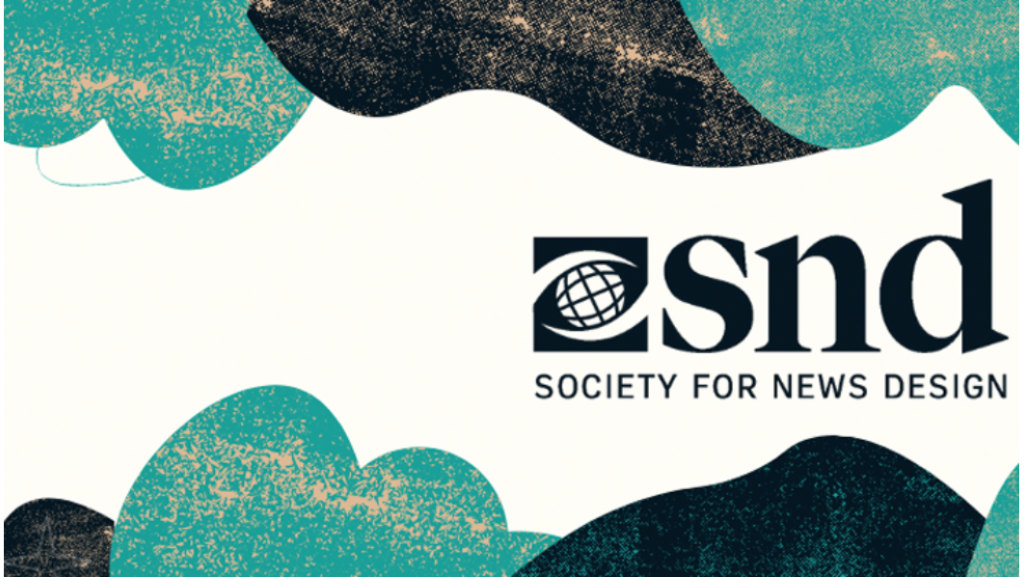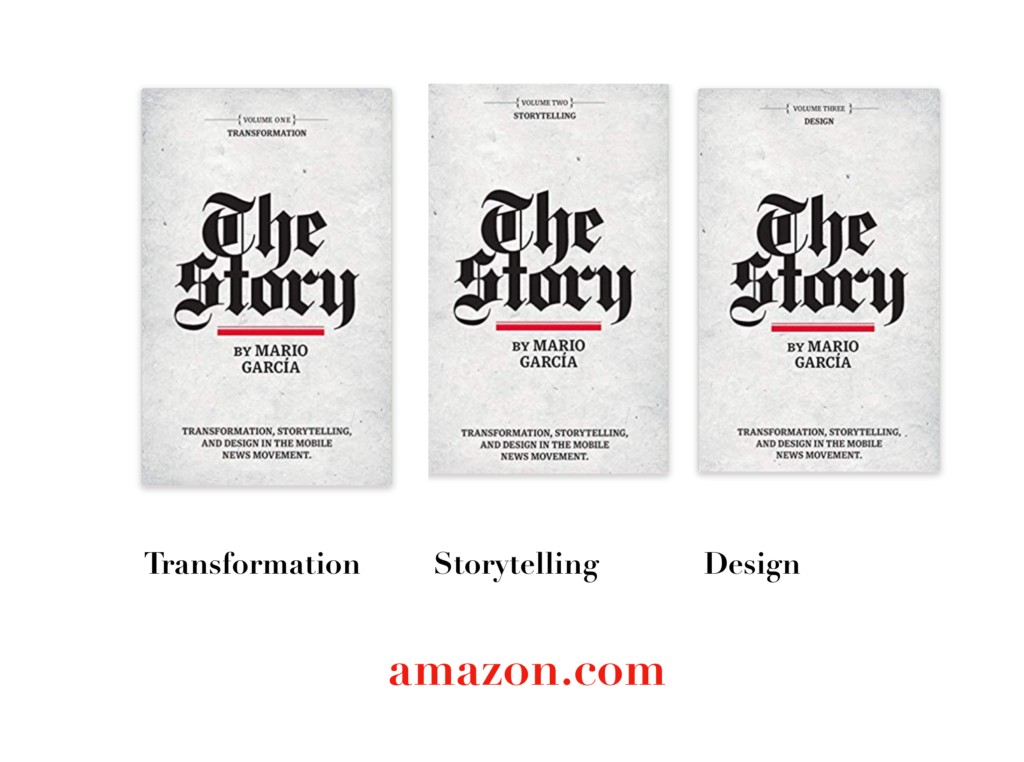Lately, I keep an eye on the way news content moves from one platform to the next.
Specifically, I am curious to see how stories that are originally created for digital/mobile consumption make it to the print edition of a newspaper.
This week, The New York Times, in its Science Lab section, showcased a full page that is exactly that true migration from digital to print is all about.
Here is the print version of Science Lab for March 18-19, 2023:

Why this is important: Notice that there is not a single story running through the page in traditional style. Instead, there are 4 different stories–if we can refer to them as stories, since they are short summaries. In fact, the style followed here is what print editors often would refer to as “a photo story”, meaning that it is not a real story, but also not a simple caption under a photo. Except, I don’t see these as photo stories. I see them as what I refer to as Instagram-style mini stories: an image with some text, just the way we tell personal stories on Instagram and Facebook.
Readers like it, too: And focus groups in which I participate with various clients around the planet lead me to believe that, while we should under no circumstances eliminate traditional longer stories, there is a high level of preference among readers for the “Instagram” approach. Give me an image and tell me a short story with it, that’s what readers are saying. I hear it in different languages, too.
How did the stories appear in the digital editions ?
Take a look and you will see that the images remain the same, and so do the texts. This is a way of saving time in content creation, and we will see more of this type of treatment as newsrooms with fewer editors realize that there is time to be saved when migrating digital content to print.
Here is how the China’s Mars story appeared online:
https://www.nytimes.com/interactive/2023/03/01/science/china-mars-rover-nasa.html

Here is how the dolphins’ story appeared online:

Here is how the bees’ story appeared online:

The process
When we discuss the concept of content creation from small to large, we are referring to mobile first strategies. Plan how stories are going to appear in the smallest of all formats, then consider how such stories will be published in larger formats, as for rectangular screens and printed pages.
I applaud the team of the Times for experimenting with different story formats, and for making the mobile first approach one that can influence how content is presented across all other platforms.
The migration of mobile storytelling to print is in full force, and that is a good thing.
Speaking at these conferences
It is a busy March for me and I would like to let you know of two programs in which I will participate, in case you wish to join.
March 22-online webinar for INMA: The Importance of Creativity and Design for Advertising. For more information, contact Mark Challinor, inma.mark@gmail.com

March 29-online webinar, Society of News Design (SND)--Creative Conference Call, all about how the essentials of design remain intact when designing across mobile/digital platforms. For more information, contact Tara McCarty, therealtaramccarty@gmail.com

Our mobile storytelling workshops train, inspire teams in newsrooms, corporate communications
It is a mobile world, and 82% of all content is consumed on a mobile device worldwide, not just news, but all sorts of documents, especially pdfs. If your company is in the business of creating content, then you need to start thinking from small to large. Create that content for the smallest platform, where a majority of the users are consuming it.
Our Garcia Media Mobile Storytelling workshops are proven to introduce your editorial team to the way we write, edit and design for mobile platforms. It is a one-day program that involves a presentation (where I summarize my Columbia University class content), and follow it with a hands on workshop.
I urge you to consult my latest book, The Story, a trilogy full of tips and explanations about mobile storytelling, which represents the latest genre for journalists to explore. See information below:

The full trilogy of The Story now available–3 books to guide you through a mobile first strategy. Whether you’re a reporter, editor, designer, publisher, corporate communicator, The Story is for you! https://amazon
Volume 1: Transformation
https://books.apple.com/us/book/the-story-volume-i/id1480169411
Volume Two: Storytelling
https://books.apple.com/us/book/the-story-volume-ii/id1484581220
Volume Three: Design
https://books.apple.com/us/book/the-story-volume-iii/id1497049918
Order the print edition of The Story, from Amazon, here:
The Story, en español:
TheMarioBlog post # 3363